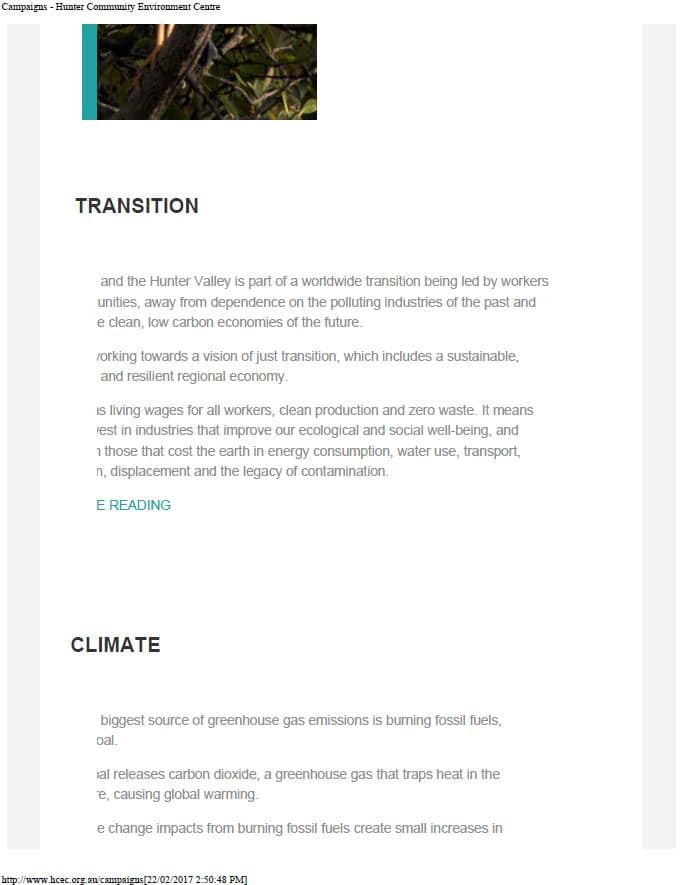The single biggest source of greenhouse gas emissions is burning fossil fuels, primarily coal. Burning coal releases carbon dioxide, a greenhouse gas that traps heat in the atmosphere, causing global warming. The climate change impacts from burning fossil fuels create small increases in temperature, which can have huge effects on winds, rainfall and the frequency and intensity of extreme weather events like storms and cyclones. Rapid change to climate and weather patterns means that our native species of plants and animals cannot adapt quickly enough, increasing the risk of extinction for many.
The coal mined in the Hunter Valley poses serious risks not only for the health and well being of local communities, but also for communities where Hunter Valley coal is burned. Scientists say that for a safe climate in Australia, we need to ensure that 90% of our remaining coal reserves stay in the ground.

